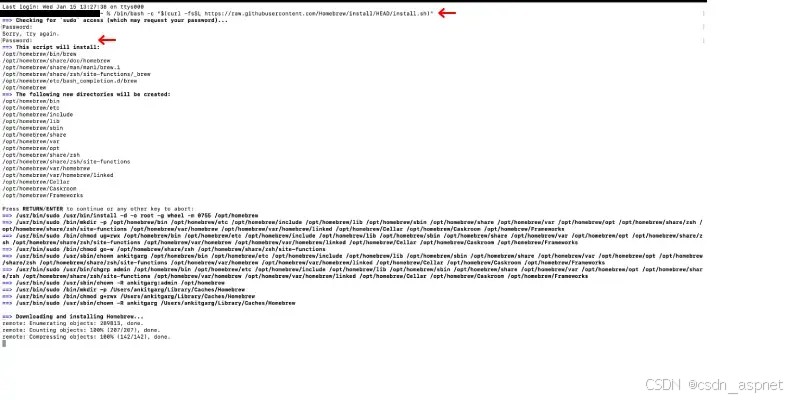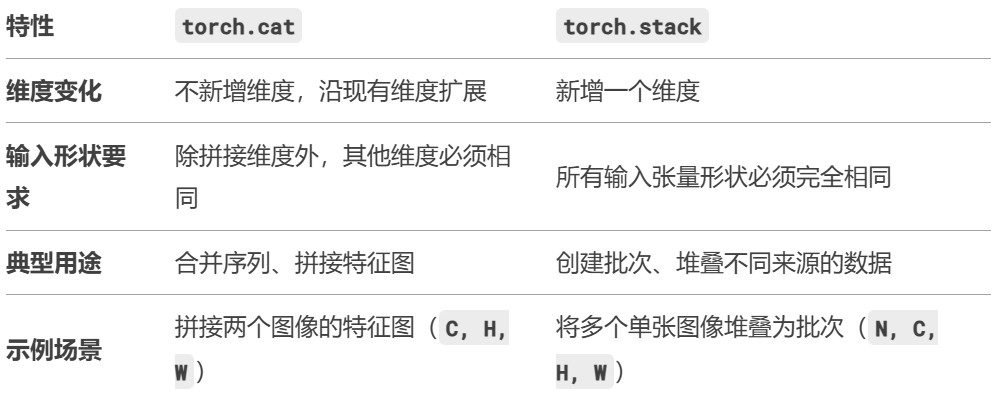1.1背景
《信息内容安全》网络信息内容获取技术课程项目设计
- 一个至少能支持10个以上网站的爬虫程序,且支持增量式数据采集;并至少采集10000个实际网页;
- 针对采集回来的网页内容, 能够实现网页文本的分类;
- 可进行重复或冗余网页的去重过滤;
- 对经去冗以后的内容建立倒排索引;
- 采用PageRank算法实现搜索结果的排序;
- 支持自然语言的模糊检索;
- 可实现搜索结果的可视化呈现。
- 可以在线记录每次检索的日志,井可对日志数据进统计分析和关联挖掘。
1.2运行环境
- 平台:全平台
- jdk 1.8.0
- ElasticSearch 7.4.0
- Python 3.6 及以上
安装依赖模块
- PageRank算法、AI文本分类与上传
|
1 |
> pip install paddlepaddle numpy elasticsearch |
- 数据的爬取与预处理
|
1 |
> pip install requests bs4 |
1.3运行步骤
安装配置ElasticSearch并启动
- 下载 并解压Elasticsearch,详细步骤自行搜索
-
- 可以从 apt 和 yum 的软件仓库安装,也可以使用 Windows MSI 安装包安装
- 安装 IK 中文分词器,详细步骤自行搜索
- 创建索引
|
1 2 3 4 5 6 7 8 9 10 11 12 13 14 15 16 17 18 19 20 21 22 23 24 25 26 27 28 29 30 31 32 33 |
PUT http://127.0.0.1/page { "settings": { "number_of_shards": "5", "number_of_replicas": "0" }, "mappings": { "properties": { "title": { "type": "text", "analyzer": "ik_max_word" }, "weight": { "type": "double" }, "content" : { "type" : "text", "analyzer": "ik_max_word" }, "content_type": { "type": "text" }, "url": { "type": "text", "analyzer": "ik_max_word" }, "update_date": { "type": "date", "format": "yyyy-MM-dd HH:mm:ss||yyyy-MM-dd||epoch_millis" } } } } |
- 启动 ElasticSearch ,在 bash 中执行 bin/elasticsearch 或者在 Windows 的 cmd、powershell 执行 bin\elasticsearch.bat
启动Web服务
|
1 2 |
> cd WebApp > java -jar *.jar |

数据的爬取与预处理
|
1 2 |
> cd DataCrawler > python crawler.py |

计算PageRank值
|
1 2 |
> cd DataProcess > python PageRank.py |

利用AI进行文本分类并上传至ES
|
1 2 |
> cd DataProcess/Text_Classification > python Classify.py |

2.需求分析
2.1数据描述
2.1.1 静态数据
|
变量名 |
描述 |
|
thread_accoun |
线程个数 |
|
initial_url |
种子页面 |
2.1.2 动态数据
|
变量名 |
描述 |
类型 |
|
restricted_domain |
限定域名 |
列表 |
|
banned_domain |
禁止域名 |
列表 |
|
thread_account |
线程个数 |
整型 |
|
total_pages |
限定页面个数 |
整型 |
2.1.3索引数据字典
页面(page)信息索引:
|
数据项名称 |
含义 |
别名 |
类型 |
备注 |
|
title |
网站标题 |
text |
使用ik_max_word 分词 |
|
|
weight |
PageRank值 |
pr值,PR值 |
double |
|
|
content |
网站中的内容 |
text |
使用ik_max_word 分词 |
|
|
content_type |
网站中的内容分类 |
text |
文化, 娱乐, 体育, 财经, 房产, 汽车, 教育, 科技, 国际, 证券 |
|
|
url |
网站的链接 |
text |
使用ik_max_word 分词 |
|
|
update_date |
数据更新的时间 |
date |
yyyy-MM-dd HH:mm:ss ||yyyy-MM-dd ||epoch_millis |
2.2. 数据采集
种子 url 数据从 init_url 列表中选取,并按照顺序,依次以各个 url 为起点进行递归的数据采集
爬取数据的url需要限制在 restricted_url 列表里面
2.3功能需求
2.3.1 数据爬取与预处理功能
利用Python爬虫,执行以下步骤:
- 开始
- 选取一个链接作为起点
- 如果爬取的网页总数达到要求,则结束,否则执行第 4 步
- 爬取指定链接的相关信息,并获取当前网站中的所有链接
- 对 4 中获取的网站中的所有链接中的每一条数据,执行过程3
爬取网站如下信息,
- title
- content
- content_type
- update_date
- url
- link(当前网站中包含的所有链接,用于计算pr值)
2.3.2. 计算 PageRank 功能
根据link计算爬取下来的每个网站的PageRank值,迭代次数为50次。解决pr值呈周期性变化的问题。将pr值作为网站重要程度的指标,并补充到网站信息中
2.3.3. AI 文本分类并提交到 ES 功能
利用深度学习,分析每个页面的content的类别。将类别补充到网站信息中,同时删除网站信息中不再使用的link项,形成最终数据,并上传至ES,供用户交互功能调用。
2.3.4. 用户交互功能
设计WebApp,用户通过浏览器访问页面。用户提交搜索信息后,判断合法性,不合法则返回ERROR界面提示用户。如果合法,则后端代码从本地 ES 中查询数据,处理后将结果分条显示到前端。同时通过限制单个ip每分钟的访问次数来简单防御用户恶意搜索。
2.4. 性能需求
2.4.1. 数据精确度
对数据精确度要求不高,主要数据为:
|
项目 |
限制 |
|
爬取的数据总量 |
每小时查询一下数据总量 |
|
查询结果数量 |
匹配的所有结果数 |
|
数据更新日期 |
精确到分钟即可 |
2.4.2. 时间特性
|
项目 |
限制 |
|
每爬取 1 万个网页耗时 |
30 分钟以内 |
|
计算 1 万个网页的pr值耗时 |
10 分钟以内 |
|
对 1 万个网页内容进行AI 进行文本分类并上传至ES耗时 |
10 分钟以内 |
|
Web 首页打开耗时 |
5 秒以内 |
|
查询结果页面打开耗时 |
5 秒以内 |
2.5. 运行需求
2.5.1. 用户界面
用户通过浏览器访问,有两个页面,一个是主页,只有简单的输入框提供用户搜索;另一个是一般界面,提供高级搜索功能,并显示搜索结果。
2.5.2. 主页
|
控件 |
作用 |
布局 |
|
图标 |
显示Logo |
居中 |
|输入框|接收用户输入的关键字|Logo图标下偏左
|按钮|提交用户输入的关键字,并返回搜索结果|输入框右|
2.5.3. 搜索结果界面
该界面分为三个部分,导航条、搜索结果、信息展示。这三个部分布局如下
|
部分 |
位置 |
height |
width |
|
导航条 |
顶部 |
50px |
100% |
|
搜索结果 |
导航条左下部 |
auto |
70% |
|
信息展示 |
导航条右下部 |
auto |
30% |
导航条部分
以下控件从左向右依次(顺序可以任意)在导航条中排列
|
控件 |
作用 |
|
输入框 |
接收用户输入的关键字 |
|
输入框 |
可以输入域名,将搜索结果限制在该域名内 |
|
数字输入框 |
查询结果分页显示,该框指示跳转到指定的搜索结果页 |
|
选择框 |
允许用户选择匹配方式:标题和内容(默认)、仅标题、仅内容 |
|
选择框 |
选择搜索结果的排序方式:倒排索引(默认)、 PageRank 排序 |
|
按钮 |
提交用户输入的所有数据,并返回搜索结果 |
搜索结果部分
将搜索结果以list的形式展示出来,每个list item显示匹配的网站的如下数据
- 标题
- 内容
- url
- 类别
- PageRank值
- 更新时间
在list结尾,显示分页组件,使用户可以点击跳转,样式如下:
|
< |
1 |
2 |
3 |
4 |
5 |
6 |
> |
信息展示部分
展示一些必要信息,如:
- 本次查询耗时
- 查询结果数
- 数据库中的数据总数
- 等等
2.5.4 软件接口
|
接口名 |
描述 |
所在模块 |
调用方式 |
|
init_first_time() |
初次启动调用此接口 |
crawler.py |
内部调用 |
|
get_result(url) |
得到目标 url 的页面 |
crawler.py |
内部调用 |
|
spider_thread() |
爬虫线程 |
crawler.py |
内部调用 |
|
main() |
主任务执行线程 |
crawler.py |
crawler.main() |
|
init() |
去掉所有未在 url 中出现的 link 及错误文件 |
PageRank.py |
内部调用 |
|
Rank(Value, start) |
计算PageRank |
PageRank.py |
内部调用 |
|
run() |
程序运行方法 |
PageRank.py |
PageRank.run() |
|
get_data(sentence) |
获取已爬取数据 |
Classify.py |
内部调用 |
|
batch_reader(json_list,json_path) |
利用AI进行文本分类 |
Classify.py |
Classify.batch_reader() |
2.5.5. 故障处理
各个功能模块如果出问题,会出现以下情况:
|
模块 |
出故障后 |
简单排查 |
|
爬虫 |
数据不再更新 |
检查网络,检查内存资源是否不足 |
|
PageRank计算 |
数据不再更新 |
检查内存资源和CPU资源是否不足 |
|
AI 文本分类 |
数据不再更新 |
检查内存资源和CPU资源是否不足 |
|
ElasticSearch |
前端无法获取查询结果 |
问题比较复杂 |
|
WebApp |
无法访问网站 |
问题比较复杂 |
其中,后两个模块出问题会造成严重问题,如果重启不能解决问题的话,采用如下措施
|
模块 |
故障排除 |
终极方法 |
|
ElasticSearch |
①java环境是否正确 |
在其他机器上部署,并修改WebApp使其到该机器上获取服务 |
|
WebApp |
①端口是否被占用 |
在其他机器上部署,并修改域名解析,将域名解析到新机器上 |
2.6. 其他需求
2.6.1. 可维护性
- 网络爬虫设置了黑名单和白名单,可以限制爬取的范围。
- 各个功能分离开,协同工作。同时,只要不修改数据格式,各个模块的修改不会影响其他模块
2.6.2. 可移植性
- WebApp 使用 Spring boot 框架开发,打包后只有一个jar包,可以在任何有java环境的机器上部署
- 其他功能都用python实现,可以部署在任何有python环境的机器上
- ElasticSearch 支持分布式部署,可以部署在任意平台
2.6.3. 数据完整性
- ElasticSearch 支持分布式,会自动将数据备份在不同节点。如果某个节点出了故障,不会破坏数据,也不会影响程序的查询结果
3.代码展示
|
1 2 3 4 5 6 7 8 9 10 11 12 13 14 15 16 17 18 19 20 21 22 23 24 25 26 27 28 29 30 31 32 33 34 35 36 37 38 39 40 41 42 43 44 45 46 47 48 49 50 51 52 53 54 55 56 57 58 59 60 61 62 63 64 65 66 67 68 69 70 71 72 73 74 75 76 77 78 79 80 81 82 83 84 85 86 87 88 89 90 91 92 93 94 95 96 97 98 99 100 101 102 103 104 105 106 107 108 109 110 111 112 113 114 115 116 117 118 119 120 121 122 123 124 125 126 127 128 |
import os import sys import json import numpy as np import time import codecs
dir_path = os.path.split(os.path.realpath(sys.argv[0]))[0] + '/../RawData'
print(dir_path) Vexname = list(os.listdir(dir_path)) Vexnum = len(Vexname) epoch = 50
# 初始化,去掉所有未在url中出现的link以及错误文件 def init(): global Vexnum falsefiles={} idx=0 start = time.perf_counter() for file in Vexname: if idx % 100 == 0: a = '=' * int(idx / Vexnum * 100) b = ' ' * (100 - int(idx / Vexnum * 100)) c = int(idx / Vexnum * 100) dur = time.perf_counter() - start sys.stdout.write("\r{:^3.0f}%[{}=>{}]{:.2f}s".format(c, a, b, dur)) sys.stdout.flush() with codecs.open(os.path.join(dir_path, file), 'r', encoding='utf-8') as load_f: try: text = json.load(load_f) except: falsefiles[file]=Vexname.index(file)-len(falsefiles) continue try: links = [] for link in text['link']: if link+'.json' in Vexname: links.append(link) text['link'] = links.copy() except: pass finally: if 'link' in text: text['link'].clear() else: text['link'] = [] with codecs.open(os.path.join(dir_path, file), 'w', encoding='utf-8') as dump_f: json.dump(text, dump_f, ensure_ascii=False,indent=4) idx += 1 print('正在删除错误文件及链接...') Vexnum -= len(falsefiles) checknum=0 checkfalse=0 for file in list(falsefiles.keys()): os.remove(os.path.join(dir_path,file)) Vexname.remove(file) for i in range(checknum,falsefiles[file]): with codecs.open(os.path.join(dir_path, Vexname[i]), 'r', encoding='utf-8') as load_f: text = json.load(load_f) try: for falsefile in list(falsefiles.keys())[checkfalse:]: if falsefile in text['link']: text['link'].remove(falsefile) except: text['link'].clear() with codecs.open(os.path.join(dir_path, Vexname[i]), 'w', encoding='utf-8') as dump_f: json.dump(text, dump_f, ensure_ascii=False,indent=4) checknum += falsefiles[file] checkfalse += 1
# 计算PageRank def Rank(Value, start): NewValue=np.zeros(Vexnum,dtype=np.double) for iter in range(1,epoch): a = '=' * int(iter / epoch * 100) b = ' ' * (100 - int(iter / epoch * 100)) c = int(iter / epoch * 100) dur = time.perf_counter() - start sys.stdout.write("\r{:^3.0f}%[{}=>{}]{:.2f}s".format(c, a, b, dur)) sys.stdout.flush() for i in range(Vexnum): with open(os.path.join(dir_path, Vexname[i]), 'r', encoding='utf-8') as load_f: text = json.load(load_f)
count = len(text['link'])
if count == 0: NewValue[i] = Value[i] continue for link in text['link']: link += '.json' NewValue[Vexname.index(link)] += Value[i] / count for i in range(Vexnum): NewValue[i] = NewValue[i] / (iter + 1) + Value[i] * (iter / (iter + 1)) Value=NewValue.copy() return Value
def run(): print('开始计算PageRank...') print('数据初始化...') init() Value = np.ones(len(Vexname),dtype=np.double)*(1000.0/Vexnum) print('错误文件删除完毕!') print('正在计算PageRank(迭代次数{})...'.format(epoch)) start = time.perf_counter() Value = Rank(Value, start) a = '=' * 100 b = ' ' * 0 c = 100 dur = time.perf_counter() - start sys.stdout.write("\r{:^3.0f}%[{}=>{}]{:.2f}s".format(c, a, b, dur)) sys.stdout.flush() print('\nPageRank计算完毕,正在往JSON中写入数据...') max = {} for file in Vexname: # 将PageRank写入JSON with open(os.path.join(dir_path, file), 'r', encoding='utf-8') as load_f: text = json.load(load_f) with open(os.path.join(dir_path, file), 'w', encoding='utf-8') as dump_f: text['weight'] = Value[Vexname.index(file)] max[file] = text['weight'] json.dump(text, dump_f, ensure_ascii=False,indent=4) print('数据写入完毕...')
if __name__ == '__main__': run() |
|
1 2 3 4 5 6 7 8 9 10 11 12 13 14 15 16 17 18 19 20 21 22 23 24 25 26 27 28 29 30 31 32 33 34 35 36 37 38 39 40 41 42 43 44 45 46 47 48 49 50 51 52 53 54 55 56 57 58 59 60 61 62 63 64 65 66 67 68 69 70 71 72 73 74 75 76 77 78 79 80 81 82 83 84 85 86 87 88 89 90 91 92 93 94 95 96 97 98 99 100 101 102 103 104 105 106 107 108 109 110 111 112 113 114 115 116 117 118 119 120 121 122 123 124 125 126 127 128 129 130 131 132 133 134 135 136 137 138 139 140 141 142 143 144 145 146 147 148 149 150 151 152 153 154 155 156 157 158 159 160 161 162 163 164 165 |
# 导入必要的包 import json import os import sys import time import math import gc
import elasticsearch import numpy as np import paddle.fluid as fluid
dir_path = os.path.dirname(os.path.realpath(__file__)) # 用训练好的模型进行预测并输出预测结果 # 创建执行器 place = fluid.CPUPlace() exe = fluid.Executor(place) exe.run(fluid.default_startup_program())
save_path = os.path.join(dir_path, 'infer_model/')
# 从模型中获取预测程序、输入数据名称列表、分类器 [infer_program, feeded_var_names, target_var] = fluid.io.load_inference_model(dirname=save_path, executor=exe)
# 主机 host = "py7hon.com:9200"
# 建立 elasticsearch 连接 try: es = elasticsearch.Elasticsearch(hosts=host) except Exception as e: print(e) exit()
# 获取数据 def get_data(sentence): # 读取数据字典 with open(os.path.join(dir_path, 'dict_txt.txt'), 'r', encoding='utf-8') as f_data: dict_txt = eval(f_data.readlines()[0]) dict_txt = dict(dict_txt) # 把字符串数据转换成列表数据 keys = dict_txt.keys() data = [] for s in sentence: # 判断是否存在未知字符 if not s in keys: s = '<unk>' data.append((np.int64)(dict_txt[s])) return data
def batch_reader(Json_list,json_path): datas = [] gc.collect() json_files = [] falsefiles = [] datas.clear() falsefiles.clear() json_files.clear() start = time.perf_counter() i=0 scale = 100 for file in Json_list: if i % 100 == 0: a = '=' * int(i / len(Json_list) * 100) b = ' ' * (scale - int(i / len(Json_list) * 100)) c = int(i / len(Json_list) * 100) dur = time.perf_counter() - start sys.stdout.write("\r{:^3.0f}%[{}=>{}]{:.2f}s".format(c, a, b, dur)) sys.stdout.flush() i+=1 with open(os.path.join(json_path, file), "r", encoding='utf-8') as f: try: text = json.load(f) except: falsefiles.append(file) continue json_files.append(os.path.join(json_path, file)) json_text = text['content'] data = get_data(json_text) datas.append(data) for file in falsefiles: os.remove(os.path.join(dir_path, file)) file_count = len(Json_list) - len(falsefiles) a = '=' * 100 b = ' ' * 0 c = 100 dur = time.perf_counter() - start sys.stdout.write("\r{:^3.0f}%[{}=>{}]{:.2f}s".format(c, a, b, dur)) sys.stdout.flush() print('\n文本数据获取完毕,共计{0}条文本数据,有效数据{2}条,无效数据{1}条(已删除)!'.format(len(Json_list),len(falsefiles),file_count)) print('AI正在加载分类模型...') # 获取每句话的单词数量 base_shape = [[len(c) for c in datas]]
# 生成预测数据 tensor_words = fluid.create_lod_tensor(datas, base_shape, place)
# 执行预测 result = exe.run(program=infer_program, feed={feeded_var_names[0]: tensor_words}, fetch_list=target_var) print('模型加载完毕!') # 分类名称 names = ['文化', '娱乐', '体育', '财经', '房产', '汽车', '教育', '科技', '国际', '证券'] count = np.zeros(10) print('AI正在对文本数据进行分类并上传至ES:') # 获取结果概率最大的label start = time.perf_counter() for i in range(file_count): if i % 100 == 0: a = '=' * int(i / file_count * 100) b = ' ' * (scale - int(i / file_count * 100)) c = int(i / file_count * 100) dur = time.perf_counter() - start sys.stdout.write("\r{:^3.0f}%[{}=>{}]{:.2f}s".format(c, a, b, dur)) sys.stdout.flush() lab = np.argsort(result)[0][i][-1] # print('预测结果标签为:%d, 名称为:%s, 概率为:%f' % (lab, names[lab], result[0][i][lab])) count[lab] += 1 with open(json_files[i], 'r', encoding='utf-8') as load_f: try: text = json.load(load_f) except: continue text['content_type'] = names[lab]
id = json_files[i].split('\\')[-1].split('.')[0] #try: del text['link'] response = es.index(index='page', doc_type='_doc', id=id, body=text) #except Exception: # print("\n" + "数据 " + id + " 插入失败,错误信息:" + response)
# with open(os.path.join(json_path,json_files[i].split('\\')[-1]),'w') as dump_f: # json.dump(text,dump_f) a = '=' * 100 b = ' ' * 0 c = 100 dur = time.perf_counter() - start sys.stdout.write("\r{:^3.0f}%[{}=>{}]{:.2f}s".format(c, a, b, dur)) sys.stdout.flush() print("\n" + "%d条文本数据分类结束!已全部上传至ES" % (file_count))
def run(): # 获取图片数据 print('AI正在获取文本数据...') json_path = os.path.realpath(__file__) + '/../../../RawData' Json_list = os.listdir(json_path) batch_size=500 if len(Json_list)>batch_size: Json_batch=0 print('当前文本数量为{0}条,正在分批处理...'.format(len(Json_list))) for batch_id in range(math.ceil(len(Json_list)/batch_size)): a=(batch_size if batch_size<(len(Json_list)-Json_batch) else len(Json_list)-Json_batch) print('正在处理第{0}批,数量为{1}...'.format(batch_id+1,a)) batch_reader(Json_list[Json_batch:Json_batch+a],json_path) Json_batch += a else: batch_reader(Json_list,json_path)
if __name__ == '__main__': run() |
4.系统展示



